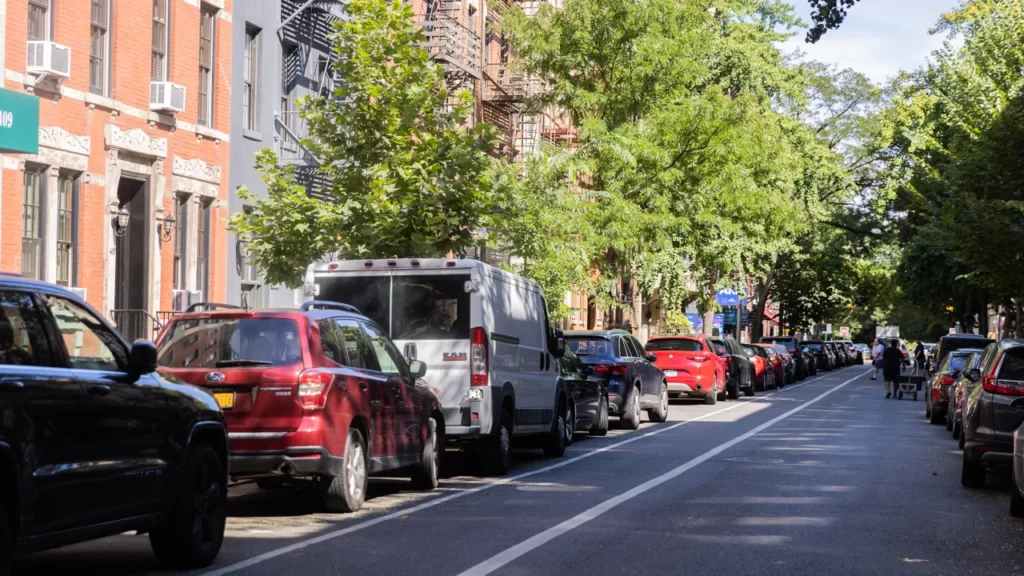Utah Residential Parking Laws: You understand how crucial it is to follow all traffic laws when driving in Utah. They are meant to keep you safe and to guarantee that traffic can move freely. When parking, you must, however, make sure that you are paying equal attention to the rules. There are several places where parking is prohibited. If you break the law, you'll likely have to pay a fine.
For the Web-Story of this Article “Click Here“.
In rare circumstances, the authorities might even order the towing of your car. To make sure you are not breaching any laws while you park, familiarise yourself with the following rules.
Generally speaking, vehicles must be parked on the right side of the road and facing the same way as other vehicles.
This allows two vehicles to effortlessly pass one another without having to reverse or back up. Furthermore, most places have a two-hour parking restriction, which necessitates car movement at least every two hours.
Overview of Residential Parking Regulations in Utah (Utah Residential Parking Laws)
It’s crucial to clarify a few basic concepts in order to comprehend Utah’s residential parking regulations.
On-street parking is the practise of leaving a car parked on a road or public space. Off-street parking is when a car is parked somewhere other than a public street or highway, like a garage or private property. Any restrictions on guests who want to leave their cars parked on private land are referred to as visitor parking restrictions.
13.24.040: REQUIREMENTS AND LIMITATIONS FOR RESIDENTIAL PARKING:
- A. All Vehicles, Trailers, And Recreational Vehicles Must Be Parked On A Hard Surface: All locations used for parking cars, boats, RVs, and trailers must have a firm surface like concrete, asphalt, brick, or another hard surface that has been certified by the director. This covers the home’s front yard, side yard, and backyard. Parking is not permitted on sites that have been landscaped or that are designated for upcoming landscaping.
- 1. Exceptions: Animal transport trailers may be stored on single-family homes that have animal rights. These trailers must be positioned inside the home’s rear setback, but they are not required to be parked on gravel or a firm surface.
- B. Maximum Area: On a residential lot, the maximum amount of hard surface for parking vehicles shall not exceed twenty percent (20%) of the front yard, excluding the driveway leading to the primary attached or detached garage, thirty-five percent (35%) of the rear yard, and one of the two (2) side yards connected to the lot. With one exception, each residential lot with a circular driveway will have its own set maximum hard surface area.
- C. Carports and Vehicle Covers: All structures affixed to the home with the intention of protecting or otherwise covering vehicles must abide by the building codes that apply to the structure in question as well as any zoning laws that may be in place regarding the minimum distance between the main dwelling structure and side property lines. Detached carports must adhere to accepted building rules and meet the minimal requirements for an auxiliary construction. When utilised, car covers must be made by an authorised company.
Residential Parking Laws in Utah Related Signs and Markings
Many residential areas in Utah have signs designating no-parking zones so that drivers are aware of when they cannot lawfully park their cars there.
Any signs may designate loading zones where motorists may stop their vehicles for a brief period of time to load or unload cargo or passengers without incurring fines for unauthorised standing or stopping (but they must still abide by any applicable traffic restrictions).

Parking regulations (5-2-3)
- A. Parallel Parking To Curb: Unless otherwise specified in this section, no person must park a vehicle with the right hand wheels facing the direction of lawful traffic movement and within eighteen inches of the curb or the edge of the roadway. (1989 Code 11-340-1; 2007 Code amendment)
- B. Lights On Parked Vehicles: When a car is legally parked on a street inside a commercial or residential sector, no lights need to be turned on. (1989 Code § 11-340-2)
Unattended Vehicle; Driver Obligation:-
- No driver of a motor vehicle shall allow such vehicle to stand unattended without first stopping the engine, locking the ignition, and taking off the key, or when the automobile is standing upon any noticeable grade, without effectively setting the brakes thereon and turning the front wheels to the curb or side of the street.
- It is against the law for anyone to park a truck with a capacity greater than one tonne rated capacity on a street where there is a perceptible grade unless the truck’s wheels are securely blocked, the front wheels are turned towards the curb if the truck is facing downhill, and the back of the front wheels are turned towards the curb if it is facing upward.
- It is against the law to leave a truck parked on a lot or area next to a street in the city that has a discernible incline without blocking the wheels of the vehicle in a secure manner. (1989 Code § 11-340-3)